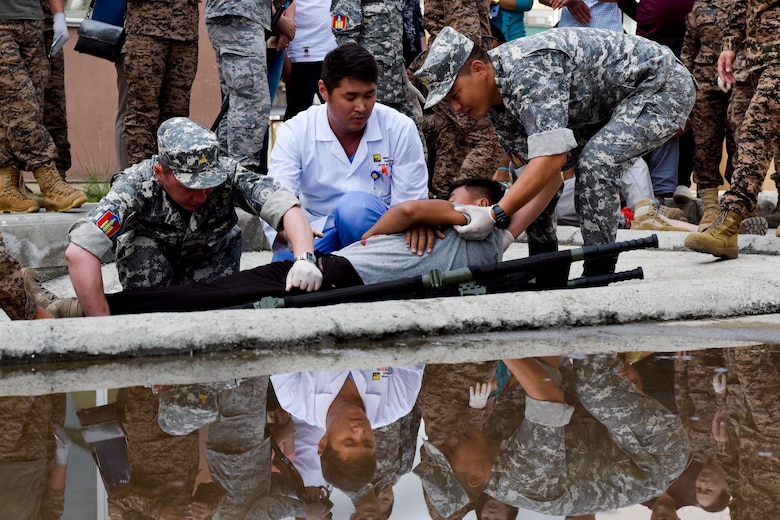Members of the U.S. Air Force and Mongolian Armed Forces conducted a mass casualty exercise Aug. 1, during Pacific Angel 19-3, a joint and combined humanitarian assistance engagement, enhancing participating nations’ humanitarian aid and disaster relief capabilities while providing beneficial services to people in need throughout South and East Asia.

The exercise was the final phase of emergency medical practice exchanges occurring between U.S. Air Force, MAF and Nepali Army subject-matter experts during PAC ANGEL 19-3 and gave teams a chance to employ skills they learned.
Six teams worked together providing emergency medical care to simulated casualties to test the lessons they learned during the previous three days of classroom training.
“Today’s exercise was to bring different disaster relief organizations together to talk and improve communication and to teach an efficient triage process, which allows them to treat hundreds of patients while using as few resources as possible,” said U.S. Air Force Master Sgt. Scottie Eubank, a 673rd Medical Group paramedic. “This exercise used a lot of the concepts from the tactical combat casualty care we teach back home.”
The teams were required to quickly assess the status of the casualties and triage the simulated patients all while being observed and evaluated on their performance. Following each iteration of the exercise, teams discussed ways to improve and were given a second attempt.
“I learned that communication between participants is very important,” said Maj. Nergui Sodnom, a MAF anesthesiologist who participated in the hands-on training. “The first time we did the mass casualty exercise it was very confusing but when we did it the second time we were much more comfortable.”
The exercise provided many learning opportunities to participants, which will improve their ability to respond to crisis situations in the future.
“Most doctors’ specialties are different, so improving each participant’s knowledge is very important, which is beneficial because it provides more precision when treating patients,” Sodnom said.
The humanitarian assistance and disaster relief exchanges employed during PAC ANGEL 19-3 strengthen relationships between Mongolia, the U.S. and other regional nations, promoting military-civilian-nongovernmental organization cooperation.








0 comments:
Post a Comment